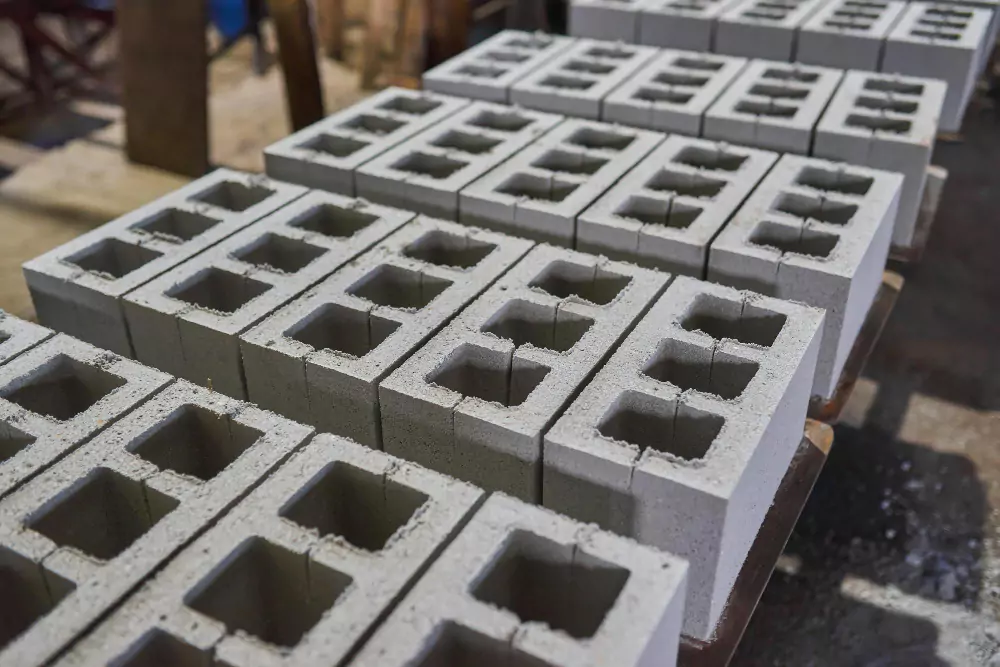When it comes to construction projects involving concrete blocks, understanding the right amount of concrete needed to fill them is essential for structural integrity and durability. In this comprehensive guide, we will delve into the factors influencing the quantity of concrete required, the step-by-step process of filling concrete blocks, and tips to ensure a successful project.

Understanding Concrete Block Construction:
Before we explore the concrete-filling process, let’s grasp the basics of concrete block construction. Concrete blocks, also known as cinder blocks or concrete masonry units (CMUs), are popular building materials due to their strength and versatility. They come in various sizes and shapes, with standard hollow blocks being a common choice for construction.
Factors Influencing Concrete Quantity:
The amount of concrete needed to fill a concrete block depends on several factors:
- Block Size: Different concrete block sizes are available, ranging from standard 8-inch hollow blocks to larger or specialty blocks. The size of the block directly influences the volume of concrete required.
- Block Configuration: Concrete blocks can have different configurations, including hollow, cellular, or solid. Hollow blocks, with voids in the center, require less concrete than solid blocks.
- Project Requirements: The purpose of the structure and engineering specifications play a crucial role. Load-bearing walls, for example, may require a different concrete filling ratio than non-load-bearing walls.
Calculating Concrete Quantity:
To determine how much concrete is needed, follow these steps:
- Measure Block Dimensions: Measure the length, width, and height of the concrete block in inches. Standard concrete blocks are often 8 inches in length and width.
- Calculate Block Volume: Multiply the length, width, and height of the block to find its volume in cubic inches.
- Convert to Cubic Yards: Divide the total cubic inches by 46,656 (the number of cubic inches in a cubic yard) to get the volume in cubic yards.
- Account for Voids: If the block is hollow, account for the voids by multiplying the volume by the percentage of solid space. Subtract this from the total volume to find the concrete volume needed.
Step-by-Step Guide to Filling Concrete Blocks:
- Prepare the Blocks: Ensure the concrete blocks are clean and free from debris. If the blocks are new, they may need to be dampened before filling to prevent them from absorbing moisture from the concrete mix.
- Mix the Concrete: Prepare a concrete mix with the appropriate proportions of cement, sand, and gravel. Follow the mix ratio recommended for your specific project.
- Fill the Blocks: Use a funnel or scoop to pour the concrete mix into the hollow cores of the concrete blocks. Work systematically to fill each block, ensuring even distribution.
- Compact the Concrete: Tap the sides of the blocks gently with a rubber mallet to eliminate air pockets and ensure the concrete settles evenly.
- Smooth the Surface: After filling, use a trowel to smooth the surface of the concrete, creating a neat and level finish.
Tips for Success:
- Use the Right Mix: Ensure the concrete mix is appropriate for your project and follows local building codes.
- Quality Control: Regularly check the consistency and quality of the concrete mix to guarantee optimal strength.
- Work Efficiently: Concrete sets over time, so work efficiently to fill the blocks before the mix begins to harden.
- Safety First: Wear appropriate personal protective equipment, including gloves and safety glasses, when working with concrete.
Conclusion: Building Strong Foundations
In conclusion, understanding how much concrete is needed to fill a concrete block is fundamental to the success of construction projects. By considering factors like block size, configuration, and project requirements, you can calculate the precise quantity of concrete required. Following a systematic approach to filling the blocks ensures structural integrity, durability, and a solid foundation for your construction endeavors. Whether you’re building your house walls, foundations, or other structures, the right amount of concrete is key to a robust and lasting result.